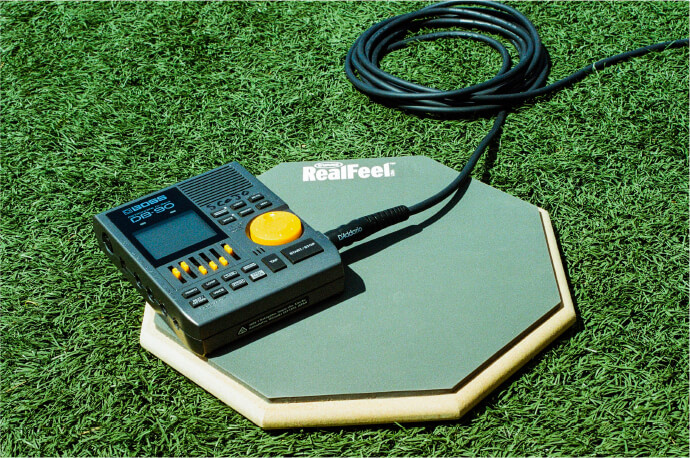METRONOME USE FOR ACOUSTIC GUITARISTS
By Jim Bailey
A metronome is an invaluable tool for acoustic guitar players seeking to develop solid time and feel. However, they often struggle to achieve a healthy balance between an interesting routine and a mind-numbing experience. The tool serves us well in its traditional use, but it may be time to explore a more creative approach. In this article, I will present easy and effective alternatives to developing good time using a metronome.
Some people think that using a metronome means turning it on at the beginning of your practice session and off at the end. In this case, you are using the metronome as a crutch. It is often easy to spot acoustic guitar students who fall prey to this. They can play pieces with a metronome very well, but when they are asked to play it again without one, their ability to feel a steady pulse is hindered.
Here are a few suggestions on how to enrich your time with a metronome:
1: Hit more than just the standard times
(like 100, 112, 120, 132). The idea behind this is to decrease the intervals between your tempo adjustments and increase your sensitivity to steady time. You are teaching yourself to feel the difference between 110 and 112, instead of 100 and 120. A famous musician was quoted as saying, “No one plays truly in tune, the greats just catch it before others do.” The same is true for time. Increase your sensitivity to time and you’ll improve your ability to maintain steady time.
2: Rhythms, like harmonies, need to be resolved
Let’s face it, syncopations scare a lot of musicians. More times than not, these syncopations end on an upbeat or another unfriendly count. Use the metronome to find and solidify the quarter note pulse in a given syncopation, directly after the syncopation (thus giving it a resolution). The more you can identify and feel the quarter note through rhythms of this nature, the more you will be able to master (and internalize) these difficult rhythms.
3: Swingin' with the met
Set the metronome to a comfortable tempo and play your favorite exercise or etude with the click representing the upbeat. This method is common among drum set players, where the click represents the hi-hat. After experimenting with this, try the same exercise with the click representing other notes of a subdivision (maybe “e” or “a” of a 16th note based exercise.) Now you are getting creative with your use of the metronome. There are plenty of possibilities here, so explore as many as possible.

4: Interacting vs. mimicking
Instead of replicating the rhythms or beats given to you by a metronome (like 8th notes and 16th notes), try interacting with it. In other words, create simple rhythmic polyrhythms (like 2 over 3) by setting the metronome to one division and playing in the other division. Play a passage of 8th notes while triplets are set on the metronome (or the reverse). Now you are not just playing to the metronome, you are playing with it!
5: Rehearsing odd meters
A metronome is one of the best ways to solidify time and feel. Try practicing 7/8 or 5/8 to a metronome set on quarter notes. You will find that the quarter note falls on the downbeat at the beginning of each odd measure and on the upbeat (“&” counts) at the beginning of the even numbered measures. This will provide a longer phrase for you when dealing with odd meters, which tends to be more musical.
There are many more ways you can create a more effective and engaging experience with the metronome. Be creative and most of all have fun!



